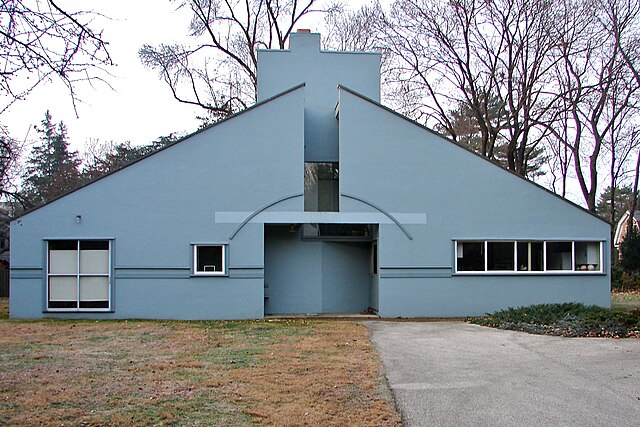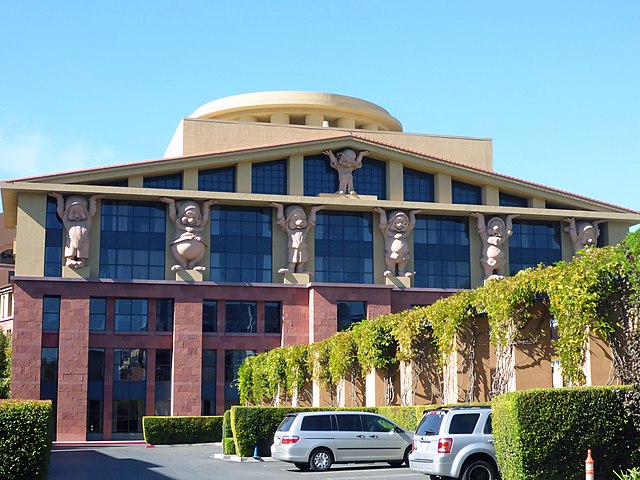Deconstructivism is a postmodern architectural movement which appeared in the 1980s. It gives the impression of the fragmentation of the constructed building, commonly characterised by an absence of obvious harmony, continuity, or symmetry. Its name is a portmanteau of Constructivism and "Deconstruction", a form of semiotic analysis developed by the French philosopher Jacques Derrida. Architects whose work is often described as deconstructivist include Zaha Hadid, Peter Eisenman, Frank Gehry, Rem Koolhaas, Daniel Libeskind, Bernard Tschumi, and Coop Himmelb(l)au.
Walt Disney Concert Hall by Frank Gehry, Los Angeles, California
Olivetti Valentine typewriter (1969) by Ettore Sottsass
Seattle Central Library by Rem Koolhaas and OMA
Libeskind's Imperial War Museum North in Trafford, Greater Manchester (2002). An archetype of deconstructivist architecture, it comprises three fragmented, intersecting curved volumes, symbolizing the destruction of war.
Postmodern architecture is a style or movement which emerged in the late 1950s as a reaction against the austerity, formality, and lack of variety of modern architecture, particularly in the international style advocated by Philip Johnson and Henry-Russell Hitchcock. The movement was introduced by the architect and urban planner Denise Scott Brown and architectural theorist Robert Venturi in their 1972 book Learning from Las Vegas. The style flourished from the 1980s through the 1990s, particularly in the work of Scott Brown & Venturi, Philip Johnson, Charles Moore and Michael Graves. In the late 1990s, it divided into a multitude of new tendencies, including high-tech architecture, neo-futurism, new classical architecture, and deconstructivism. However, some buildings built after this period are still considered postmodern.
Image: V Venturi H 720am
Image: Teamdisneyburbankbuilding
Image: Guildhouse Philly
Image: Sony Building by David Shankbone








